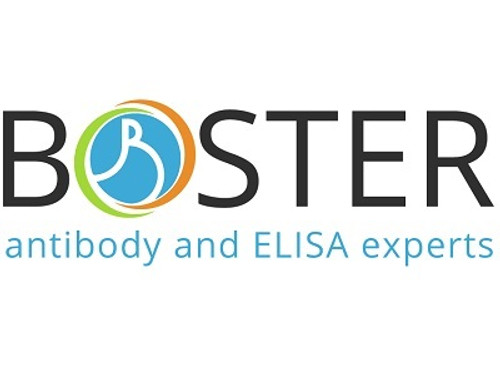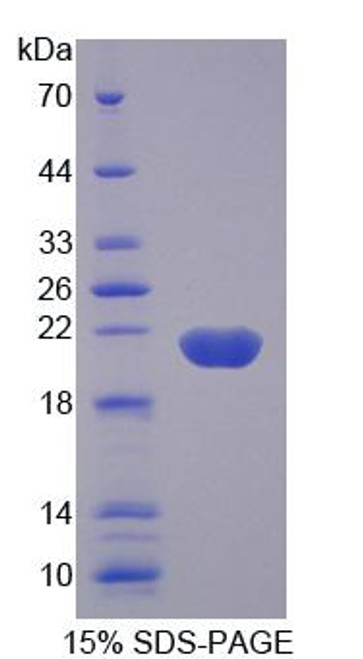Product Description
Gremlin-1 (isoform-1) belongs to a group of diffusible proteins which bind to ligands of the TGF- family and regulate their activity by inhibiting their access to signaling receptors. The interplay between TGF- ligands and their natural antagonists has major biological significance during development processes, in which cellular response can vary considerably depending upon the local concentration of the signaling molecule. Gremlin is highly expressed in the small intestine, fetal brain, and colon and lower expression in brain, prostate, pancreas and skeletal muscle. Gremlin-1 regulates multiple functions in early development by specifically binding to and inhibiting the function of BMP-2, -4, and -7. It also plays a role in carcinogenesis and kidney branching morphogenesis. Recombinant Gremlin-1 is an 18.3 kDa protein containing 160 amino acid residues.
Biovision | 7159 | Gremlin-1 human recombinant DataSheet
Biomolecule/Target: Gremlin-1
Synonyms: CKTSF1B1, DAND2, DRM, IHG-2
Alternates names: FST, FS, Activin-binding protein
Taglines: A TGF- antagonist
NCBI Gene ID #: 10468
NCBI Gene Symbol: FST
Gene Source: Human
Accession #: P19883
Recombinant: Yes
Source: CHO cells
Purity by SDS-PAGEs: 95%
Assay: SDS-PAGE
Purity: N/A
Assay #2: HPLC
Endotoxin Level: < 0.1 ng/g of protein (<1EU/g).
Activity (Specifications/test method): Determined by its ability to inhibit BMP-4 induced alkaline phosphatase production by ATDC-5 chondrogenic cells. The ED50 for this effect is 0.07-0.11 g/ml
Biological activity: Determined by its ability to neutralize Activin A inhibitory effect of murine MPC-11 cells. The expected ED is 0.1-0.4 µg/ml in the presence of 7.5 ng/ml Activin A.
Results: N/A
Binding Capacity: N/A
Unit Definition: N/A
Molecular Weight: 31.5 kDa
Concentration: N/A
Appearance: Lyophilized powder
Physical form description: Sterile filtered through a 0.2 micron filter. Lyophilized from 10 mM Sodium Phosphate, pH 7.5 and 150 mM NaCl.
Reconstitution Instructions: Reconstitute in HO to a concentration of 0.1-1.0 µg/µl. The solution can then be diluted into other aqueous buffers and stored at 4°C for 1 week or 20°C for future use.
Amino acid sequence: N/A
 Euro
Euro
 USD
USD
 British Pound
British Pound
 NULL
NULL











![Recombinant Human Gremlin-1 Protein [E. coli] Recombinant Human Gremlin-1 Protein [E. coli]](https://cdn11.bigcommerce.com/s-452hpg8iuh/images/stencil/500x659/products/671140/928983/logo__42078.1651665136__70895.1651684189.jpg?c=2)
